From backyard gardening to running a full-fledged farm, the feeling of growing your vegetables is unmatched.
Spring is the best time to try your hand at building a small garden. The weather is perfect for several types of vegetables, and you have control over the pesticides and fertilizers you use in these.
Growing spring vegetables can be simple. All you need to do is understand how a plant thrives, and you will be reaping fresh, nutritious vegetables in no time.
30 Vegetables to Plant in Spring
- Peas
- Broccoli
- Spinach
- Lettuce
- Radishes
- Cauliflower
- Beets
- Swiss chard
- Kohlrabi
- Cucumbers
- Carrots
- Potatoes
- Vidalia onions
- Rhubarb
- Herbs
- Arugula
- Asparagus
- Cardoons
- Fava Beans
- Green Garlic
- Leeks
- New Potato
- Turnip
- Spring Onions
- Parsley
- Lemons
- Kale
- Brussels Sprouts
- Ramps
- Bok Choy
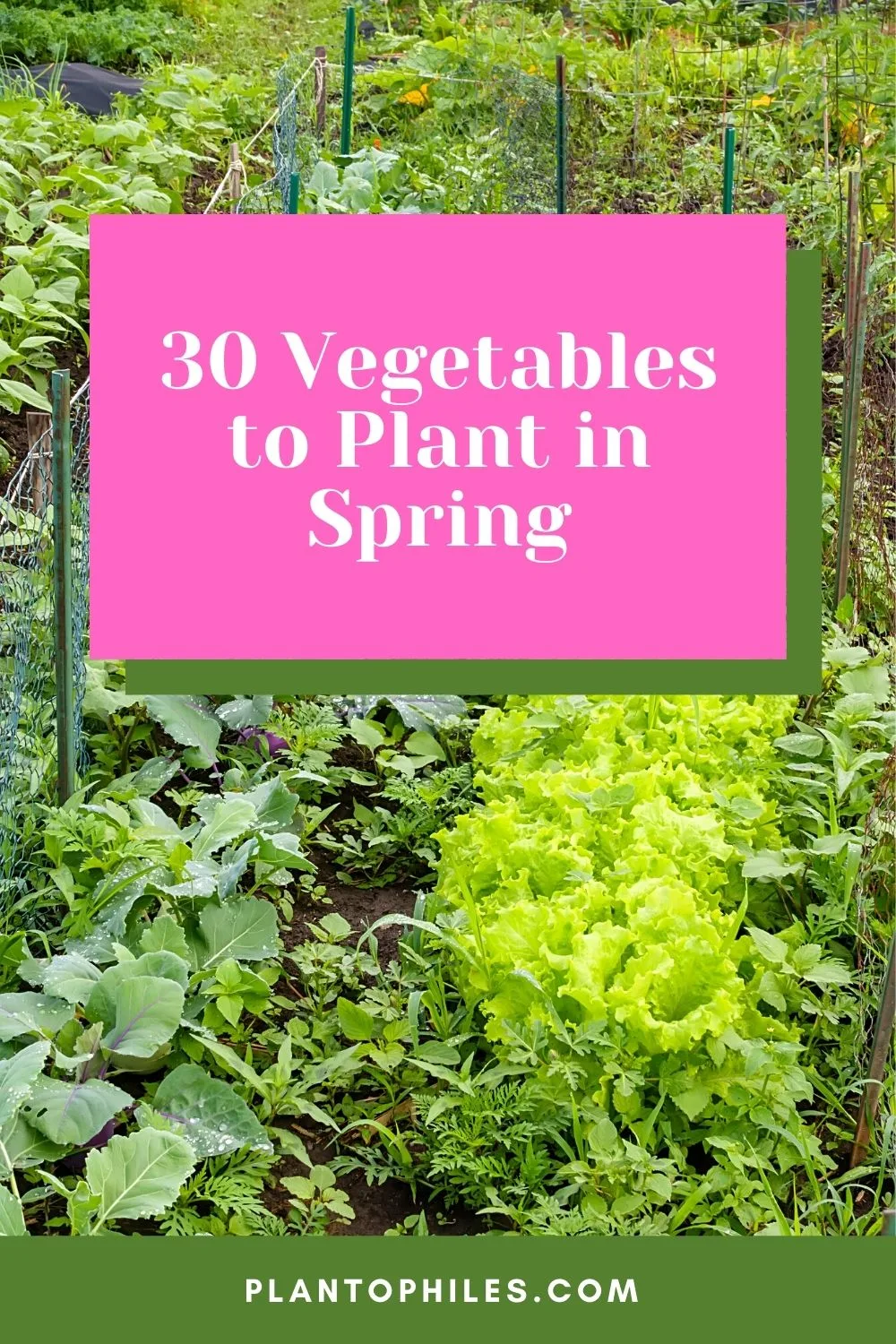
30 Vegetables to Plant in Spring
Table of Contents
Vegetables to Plant in Spring – Top 30
1. Peas
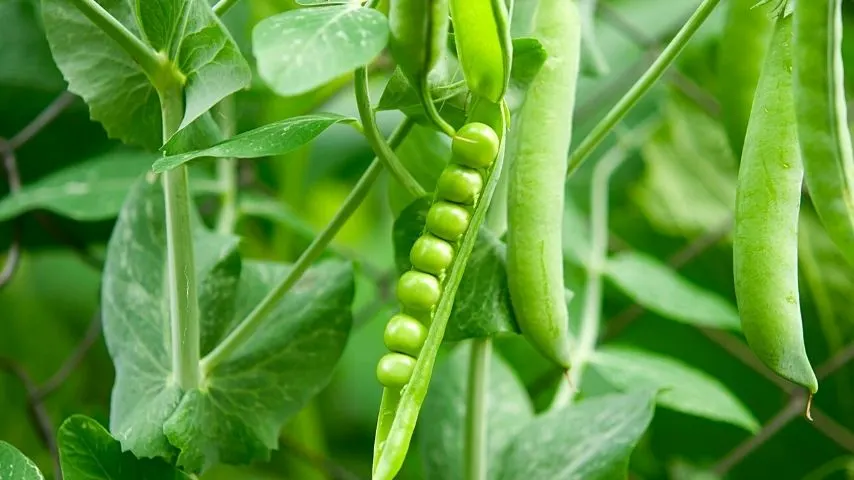
Peas are spherical vegetables growing in a pod that thrives when you grow them in spring
Peas are green spherical vegetables that grow inside a pod on a vine. This vegetable is eaten whole as a pod, or the spheres are removed for cooking purposes.
How they are eaten depends on the type of pea in question. Agricultural experts deduced that these delicious vegetables grew as wild plants in the Mediterranean Basin before the agricultural evolution in 10,000 B.C.
This is an ideal plant for the springtime.
Its binomial nomenclature and basic plant care requirements include:
- Scientific Name: Pisum Sativum
- Family: Fabaceae or Leguminosae according to Purdue University.
- Temperature: 40 to 80 degrees Fahrenheit (4-to-27 degrees Celsius)
- Fertilizer: high phosphorus and fertilizer containing weed killer are not recommended
- pH: 6 to 7.5
- Soil: fertile and loamy (well-draining) soil
- Lighting: 8 to 10 hours (bright light/sunlight)
- Growth rate: ready to harvest between 60 to 70 days
- Humidity: 90-98% humidity is recommended
2. Broccoli
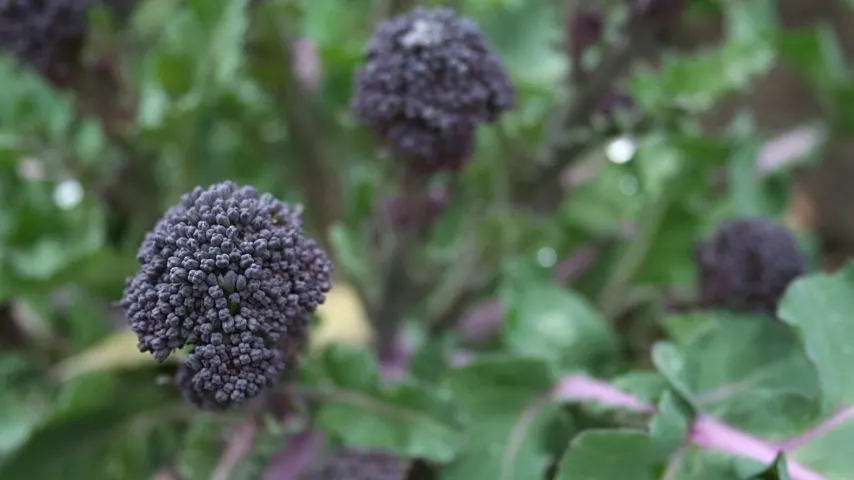
Though a spring-loving vegetable, Broccoli can thrive in cold temperatures
Broccoli is a spring-loving vegetable that thrives in cooler weather. This mineral and the vitamin-rich crop is a cole crop.
As a rich source of fiber, iron, folic acid, and potassium, this is one superfood no one should miss.
If you plan to grow this nutrient-dense vegetable in your spring garden, you must understand a few things about its growing conditions.
Its binomial nomenclature and basic plant care requirements include:
- Scientific Name: Brassica Oleracea var. Italica
- Family: Brassicaceae
- Temperature: 65 to 70 degrees Fahrenheit (18-to-22 degrees Celsius)
- Fertilizer: tea compost or rich manure
- pH: 6 to 7
- Soil: Well-draining sandy/clay loam soil
- Lighting: 5 to 6 hours (sunlight)
- Growth rate: Slow to the moderate growth rate
- Humidity: 90-95% humidity is recommended
3. Spinach

Spinach is another vegetable you can plant during springtime
This leafy green vegetable is a rich source of iron and fiber. Spinach is one of the most consumed vegetables globally, this is a spring-loving plant that thrives in the spring and following months.
This plant has a fascinating history. Thought to have originated about 200 years ago in the Persian region, this plant is recorded in several medical works the of 827 AD.
Its binomial nomenclature and basic plant care requirements include:
- Scientific Name: Spinacia oleracea
- Family: Amaranthaceae
- Temperature: 50 degrees Fahrenheit to 60 degrees Fahrenheit (18.3-to-23.9 degrees Celsius)
- Fertilizer: a fertilizer with more nitrogen
- pH: 6.5 to 8
- Soil: nitrogen-rich, moist soil
- Lighting: 6 to 8 hours (sunlight)
- Growth rate: moderate growth rate (can be harvested in six weeks)
- Humidity: 90-95% humidity is recommended
4. Lettuce
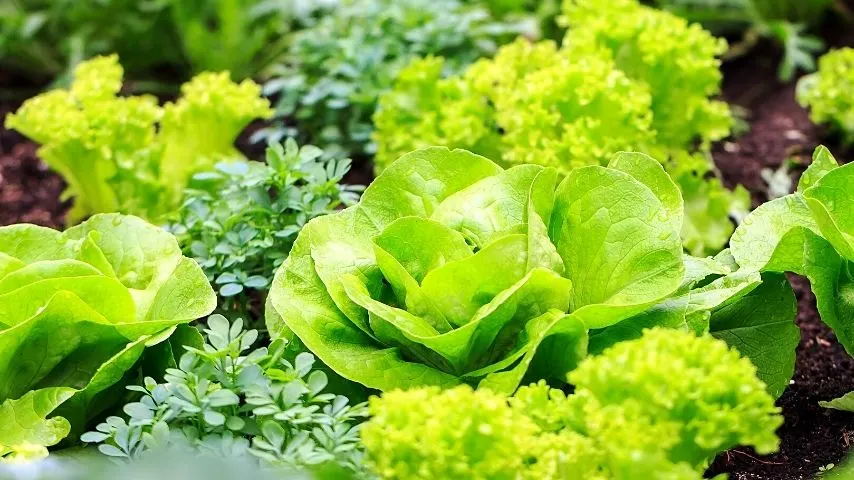
Lettuce is another vegetable that you can grow during spring
Lettuce is a fall/spring crop. Commonly served as a salad base, this leafy green is a rich vitamin A and K source.
Several botanical varieties of this vegetable are grown during the spring season. This plant requires ample water to thrive.
This vegetable can adjust to greenhouse growing systems quite well depending on the temperature changes.
Its binomial nomenclature and basic plant care requirements include:
- Scientific Name: Lactuca sativa
- Family: Asteraceae
- Temperature: 55-65 degrees Fahrenheit (13-18 degrees Celsius)
- Fertilizer: a water-soluble or granular fertilizer
- pH: 6 to 7
- Soil: well-draining excellent soil with compost and manure
- Lighting: up to 5 hours(sunlight)
- Growth rate: fast growth rate
- Humidity: 50-70% humidity is recommended
5. Radishes
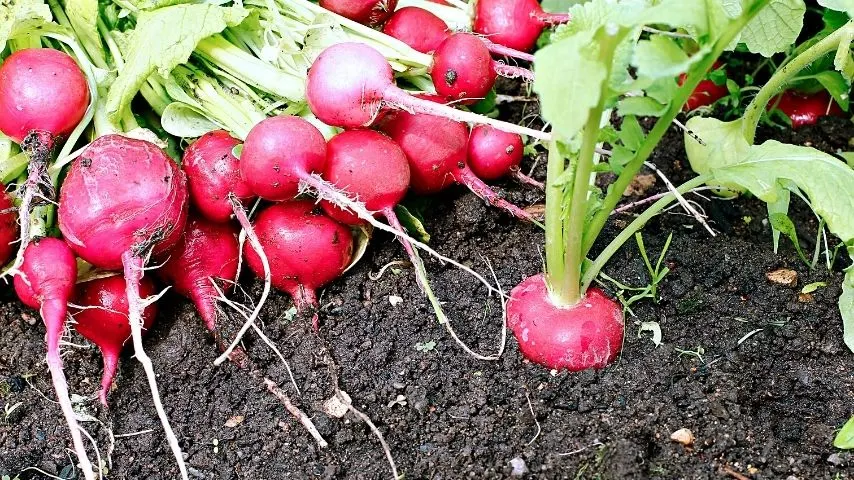
Radishes are grown as companion plants in your spring garden
This crunchy root vegetable adds a peppery flavor to salads and side dishes. You can eat it cooked, raw, or pickled.
Radishes are usually grown as companion vegetables and are relatively less prone to pests and diseases.
There are several varieties of this plant, and each grows at a different pace, to a different size, and with a different appearance. Nevertheless, some aspects of developing this vegetable remain the same.
Its binomial nomenclature and basic plant care requirements include:
- Scientific Name: Raphanus sativus
- Family: Brassicaceae
- Temperature: 60⁰ F to 65⁰ degrees Fahrenheit (15.5-to-18.3 degrees Celsius)
- Fertilizer: radishes do not need a fertilizer
- pH: 65 to 70
- Soil: well-draining sandy-loam soil
- Lighting: up to 5 hours(sunlight)
- Growth rate: fast growth rate
- Humidity: 50-60% humidity is recommended
6. Cauliflower
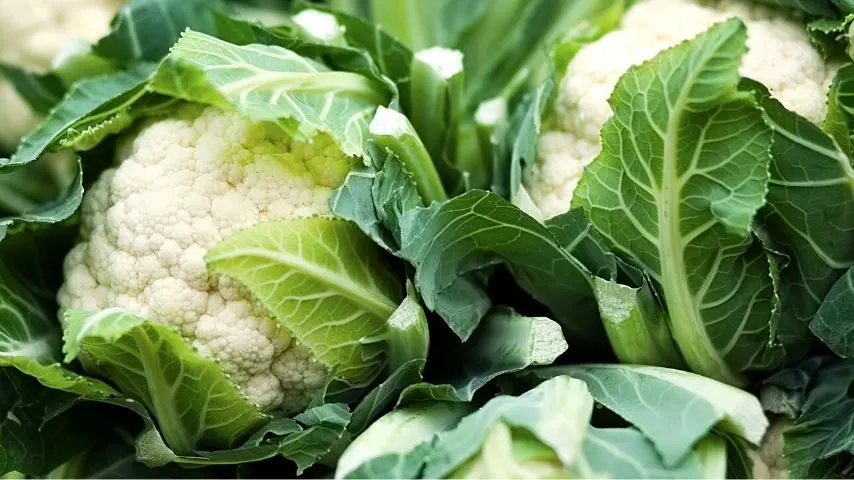
Cauliflower thrives in the cooler temperatures of spring
Cauliflower is part of the list of the most nutritious vegetables. Cauliflower plantations thrive in cooler weather, i.e., the beginning of spring.
Growing this vegetable can be tricky; therefore, understand the right temperature, soil type, and humidity before planting a spring garden.
Unsuitable growing conditions will cause the plant to develop button flowers instead of one large head of cauliflower.
Its binomial nomenclature and basic plant care requirements include:
- Scientific Name: Brassica oleracea var. botrytis
- Family: Brassicaceae
- Temperature: 60 degrees Fahrenheit to 65 degrees Fahrenheit (15.5-to-18.3 degrees Celsius)
- Fertilizer: do not need a fertilizer
- pH: 6 to 7
- Soil: Rich, moist, and well-draining soil
- Lighting: at least 6 hours(sunlight)
- Growth rate: moderate growth rate
- Humidity: 95-100% humidity is recommended
7. Beets
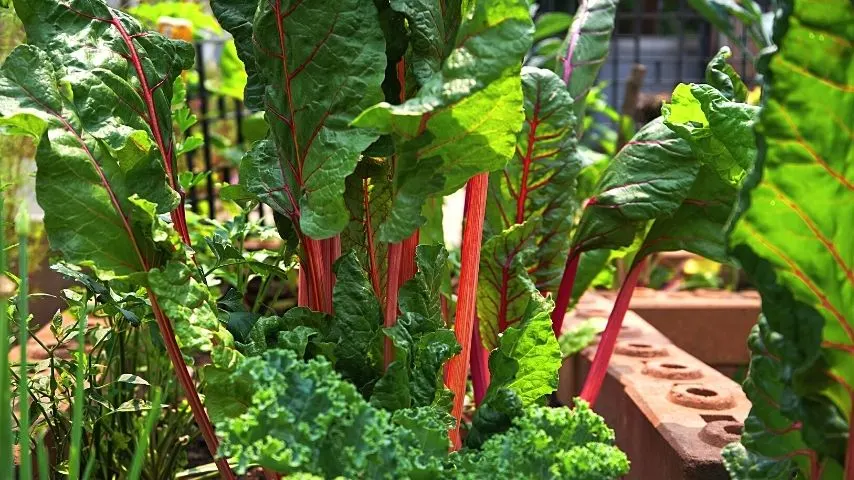
Beets is a root crop that you should grow in your garden during spring
This root vegetable is one you should plant during spring. This nutrient-dense source of fiber, manganese, potassium, iron, and vitamin C is ideally sown during mid-April.
It is best to harvest this crop latest by June or when the vegetable is the size of a cricket ball. Waiting for it to grow larger can lead to a more woody/earthy taste.
Its binomial nomenclature and basic plant care requirements include:
- Scientific Name: Beta Vulgaris
- Family: Amaranthaceae
- Temperature: 50 degrees Fahrenheit to 85 degrees Fahrenheit (15.5-to-18.3 degrees Celsius)
- Fertilizer: organic matter-based fertilizer is recommended
- pH: 6 to 7
- Soil: moist, well-draining, and loamy soil
- Lighting: at least 6 hours(sunlight)
- Growth rate: fast growth rate
- Humidity: 95-100% humidity is recommended
8. Swiss Chard
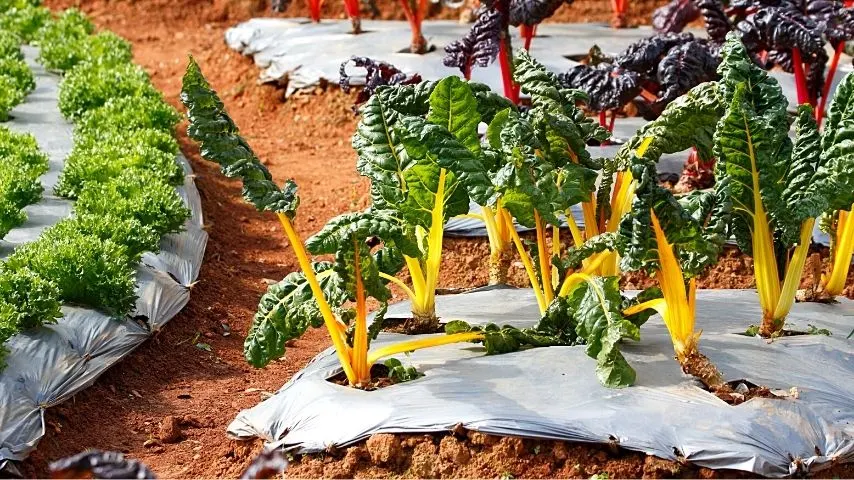
Swiss chard is an antioxidant-rich vegetable you can grow in spring
This is an antioxidant-rich vegetable that grows during the spring season. Loaded with fiber, vitamin K and heart-healthy nutrients, this excellent plant can grow in the poorest of soils.
The average yield for this crop is about 6 kgs per 3 km. The seeds should be placed at least 25cm apart for a good harvest.
Early thinning of the otherwise thick stalks can be used in salads for elevated taste.
Its binomial nomenclature and basic plant care requirements include:
- Scientific Name: Beta Vulgaris subsp. vulgaris
- Family: Amaranthaceae
- Temperature: 40 degrees Fahrenheit to 100 degrees Fahrenheit (5-to-38 degrees Celsius)
- Fertilizer: compost-based and well-drained soil
- pH: 6 to 6.5
- Soil: moist, well-draining, and loamy soil
- Lighting: at least 6to 8 hours(sunlight)
- Growth rate: fast growth rate
- Humidity: 98-100% humidity is recommended
9. Kohlrabi
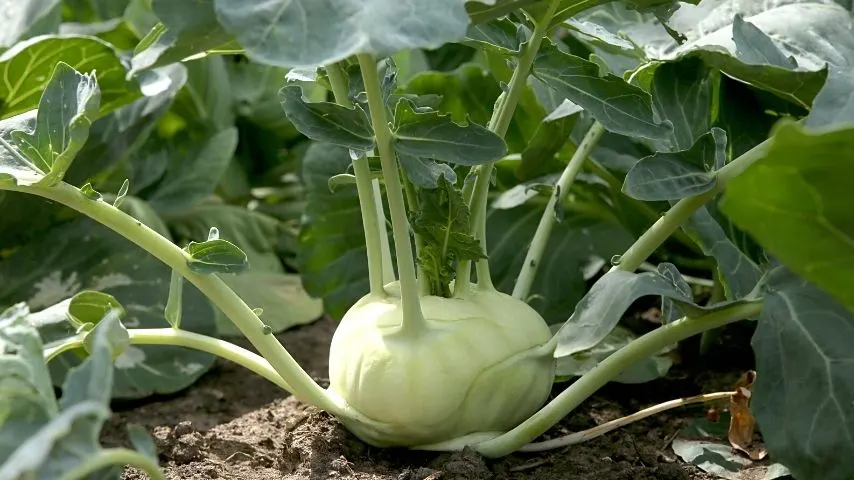
Kohlrabi’s bulbous stems can be a constant source of nutrients for your salads that grows well during spring
This German Turnip originated in South Asia and south-east Asia. Kohlrabi tastes like broccoli stems or cabbage hearts but is slightly sweeter.
Before cooking, the fibrous layers around the stem must be peeled away as they do not soften even at high temperatures. However, the bulbous stem makes for a nutritious addition to salads.
Its binomial nomenclature and basic plant care requirements include:
- Scientific Name: Brassica oleracea Gongylodes
- Family: Cruciferae
- Temperature: 60-80 degrees Fahrenheit (16-20 degrees Celsius)
- Fertilizer: organic matter-based fertilizer is recommended
- pH: 6 to 7.5
- Soil: Loamy, well-drained, and loamy soil
- Lighting: at least 6 hours (direct sunlight)
- Growth rate: moderate growth rate
- Humidity: 95% humidity is recommended
10. Cucumbers
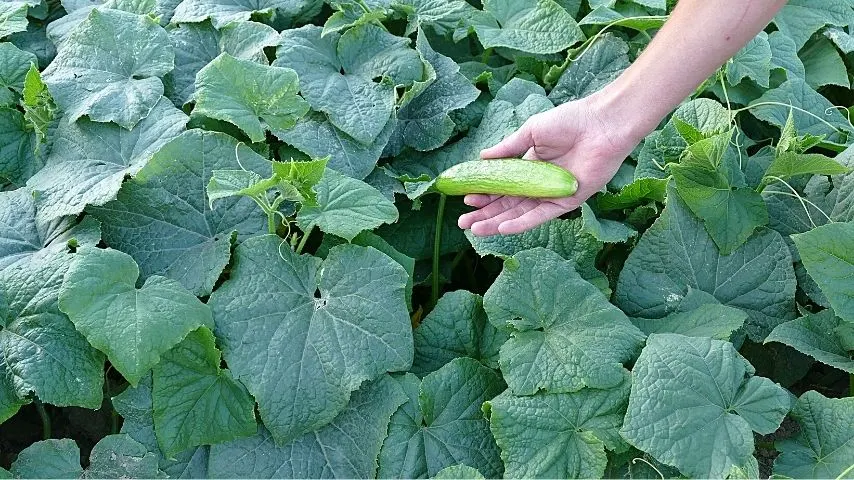
Cucumbers is one of the most popular vegetables in the world that you can grow in your garden in spring
Fresh, delicious, crunchy- this is one of the most widely used vegetables around the globe. Ideal for garden salads on a summer day, cucumbers are one of the ideal plants for the springtime.
This creeping vine plant has large leaves covering cucumbers from the sun. This botanical berry is perceived to be a springtime vegetable.
Its binomial nomenclature and basic plant care requirements include:
- Scientific Name: Cucumis sativus
- Family: Cucurbitaceae
- Temperature: 75 degrees Fahrenheit to 85 degrees Fahrenheit (23.9-to-29.4 degrees Celsius)
- Fertilizer: must be high in potassium and phosphorus
- pH: 6 to 7.5
- Soil: loose, sandy, and loamy soil
- Lighting: at least 6 hours (sunlight)
- Growth rate: moderate growth rate
- Humidity: 85-95% humidity is recommended
11. Carrots
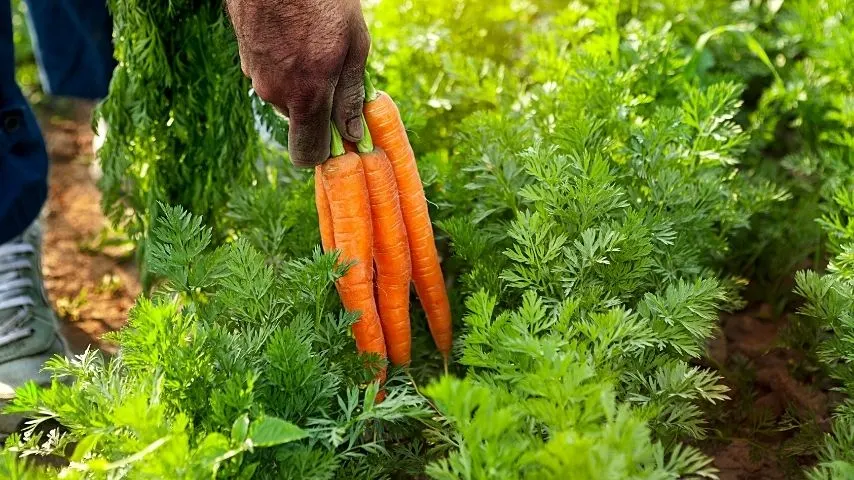
Carrots is a versatile vegetable to grow in your spring garden
The ultimate source of beta carotene, carrots are one of the most delicious and versatile spring vegetables. This vegetable is often linked to good eyesight and reduced cholesterol levels.
Moreover, the carotene in this vegetable also reduces the risks of cancer and promotes weight loss. If this plant isn’t on your list of spring plantations, then it may be time to learn more about planting it correctly.
Its binomial nomenclature and basic plant care requirements include:
- Scientific Name: Daucus Carota
- Family: Apiaceae
- Temperature: 55 degrees Fahrenheit to 75 degrees Fahrenheit (15ᵒC-to-18ᵒC)
- Fertilizer: potassium and phosphate-rich fertilizers are ideal
- pH: 6 to 7
- Soil: loose, sandy, and loamy soil
- Lighting: at least 10 to 12 hours (sunlight)
- Growth rate: fast
- Humidity: 95%-100% humidity is recommended
12. Potatoes
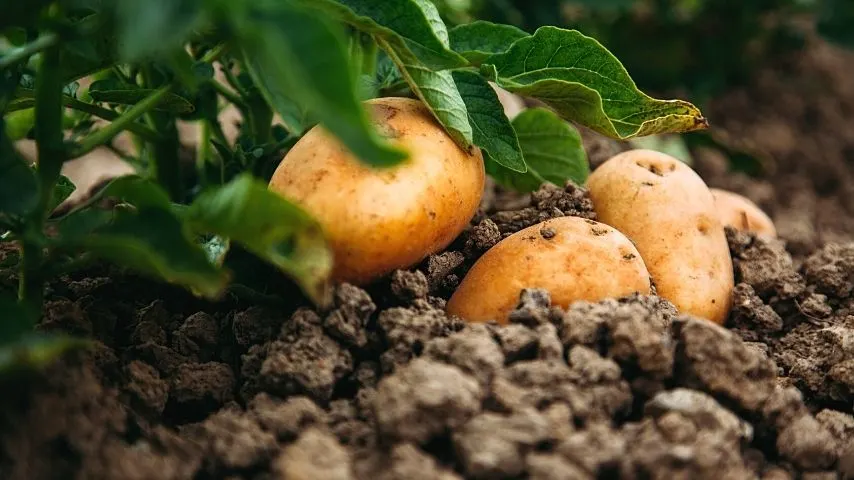
Potatoes thrive best when you plant them at the beginning of spring
The beginning of spring is the ideal time for planting potatoes (seed segments). Each piece must be spaced at least 12-inches apart.
This root vegetable isn’t just delicious and a staple across several cuisines. It is safe to say that a spring garden without potatoes is incomplete.
Several varieties of this vegetable can be grown for storage or exportation purposes.
Its binomial nomenclature and basic plant care requirements include:
- Scientific Name: Solanum tuberosum
- Family: Nightshade
- Temperature: 60 degrees Fahrenheit to 70 degrees Fahrenheit (16-to-21ᵒC)
- Fertilizer: must be high in potassium and nitrogen
- pH: 6 to 6.5
- Soil: Well-draining sandy soil
- Lighting: 6 hours (sunlight)
- Growth rate: fast
- Humidity: 95% (relative) humidity is recommended
13. Vidalia Onions
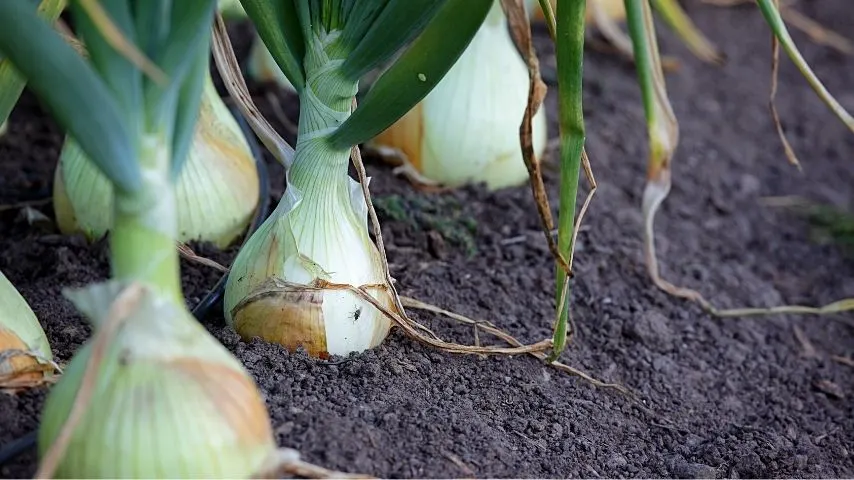
Vidalia Onions, grown only in Georgia, acquire their unique taste when you plant them in spring
This is a vegetable that can legally be grown only in Georgia. However, this sweet variety of onion acquires its taste from being planted in the springtime.
This sweet juicy variety of onions offers a flavor that favors a wide range of pallets, including sweet dishes.
Its binomial nomenclature and basic plant care requirements include:
- Scientific Name: Allium Cepa
- Family: Amaryllidaceae
- Temperature: 75 degrees Fahrenheit to 90 degrees Fahrenheit (23.8-to-32.2 ᵒC)
- Fertilizer: nitrogen-based fertilizer
- pH: 6 to 7
- Soil: lose sandy soils
- Lighting: 10-12 hours (sunlight)
- Growth rate: moderate growth rate
- Humidity: 70-75% (relative) humidity is recommended
14. Rhubarb
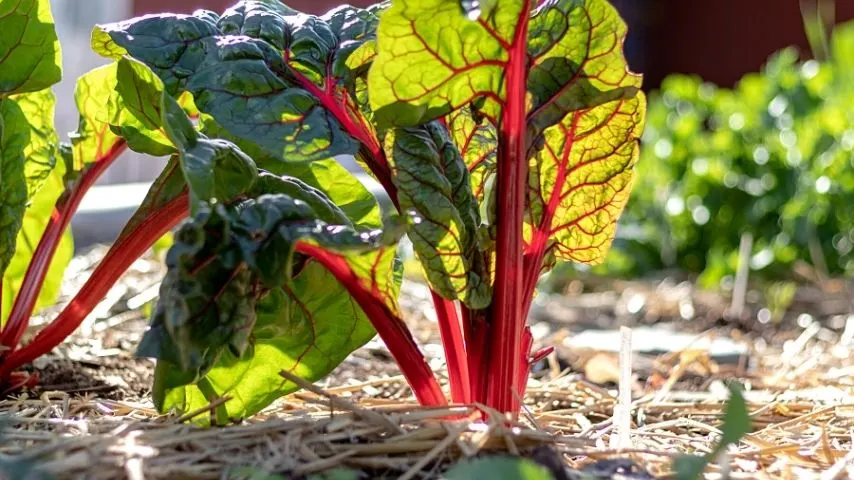
Rhubarb‘s pink stalks are edible and thrives best when you grow them in spring
This is a genuinely seasonal plant with a vibrant sour taste and a gorgeous pink color. The pink stalk is the plant’s edible part.
It is usually used in sweet dishes as the sourness of the branch can only be balanced by the sweetness of sugar or other sweeteners. It is best harvested in early April or late March.
Its binomial nomenclature and basic plant care requirements include:
- Scientific Name: Rheum Rhubarbarum
- Family: Buckwheats
- Temperature: 28 degrees Fahrenheit to 40 degrees Fahrenheit (-2.22-to-4.44ᵒC)
- Fertilizer: all-purpose garden fertilizer
- pH: 6 to 6.8
- Soil: rich, slightly moist soils
- Lighting: 6 hours (sunlight)
- Growth rate: moderate growth rate
- Humidity: 95-100% humidity is recommended
15. Basil
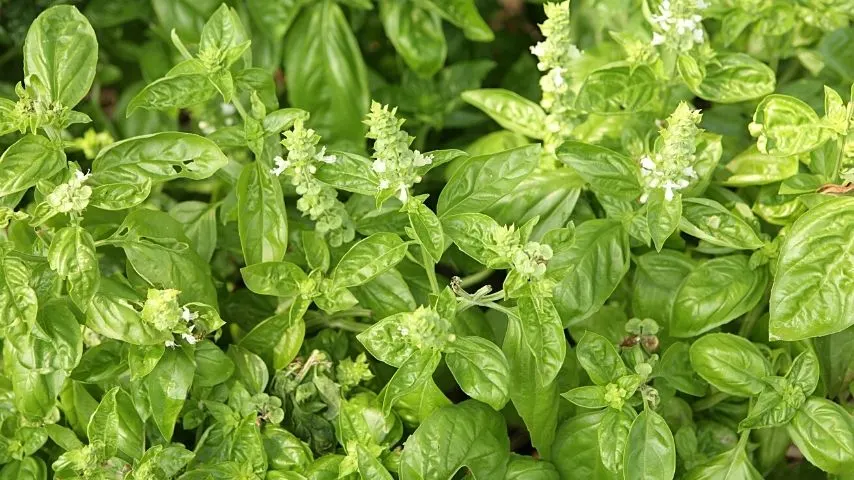
Basil is an herb that you can grow in your garden during spring
Color, flavor, and aroma- basil genuinely adds to food’s finishing touches. These vibrant green plants are best planted in spring and harvested consistently for use and exports around the globe.
From anise to basil and cardamom, several spices can be grown right in your backyard, given that you understand the conditions for the plantation.
Its binomial nomenclature and basic plant care requirements include:
- Scientific Name: Ocimum Basilicum
- Family: Lamiaceae
- Temperature: 50 degrees Fahrenheit to 80 degrees Fahrenheit (10-to-26.6 ᵒC)
- Fertilizer: balanced fertilizer with phosphate, nitrogen, and potassium
- pH: 6 to 7.5
- Soil: rich compost-based, moist, and well-drained
- Lighting: 6 hours (bright sunlight)
- Growth rate: moderate growth rate
- Humidity: 40-60% humidity is recommended
16. Arugula
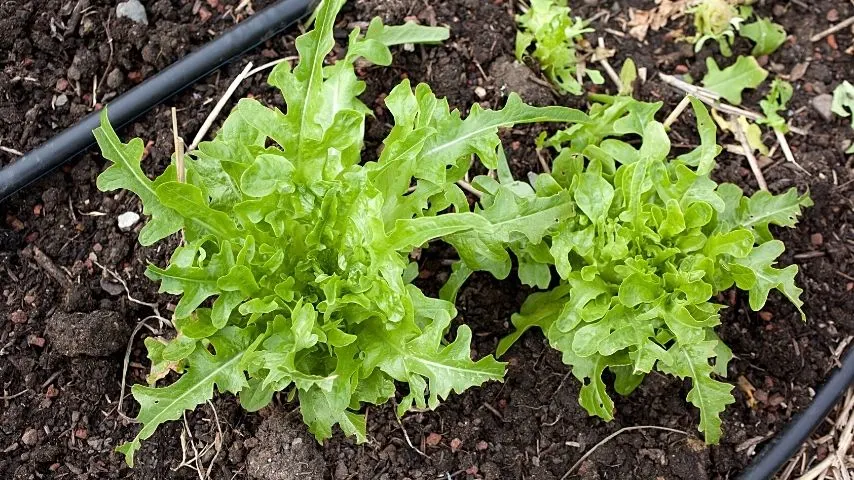
Arugula is a cruciferous vegetable that thrives best when planted in spring
This is a cruciferous vegetable related to kale, broccoli, and cabbage. The peppery taste adds a fresh flavor to salads, and the seeds of this plant can also be eaten pressed in oil.
This spring vegetable is packed with vitamins, minerals, and folate. Ideal planting conditions for this vegetable are:
- Scientific Name: Eruca vesicaria ssp. sativa
- Family: Brassicaceae
- Temperature: 45 degrees Fahrenheit to 65 degrees Fahrenheit (16-to-18ᵒC)
- Fertilizer: rich compost and high-nitrogen fertilizer
- pH: 6 to 7.0
- Soil: nutrient-rich and well-drained
- Lighting: 10-12 hours (bright sunlight)
- Growth rate: fast growth rate
- Humidity: 90-98% humidity is recommended
17. Asparagus
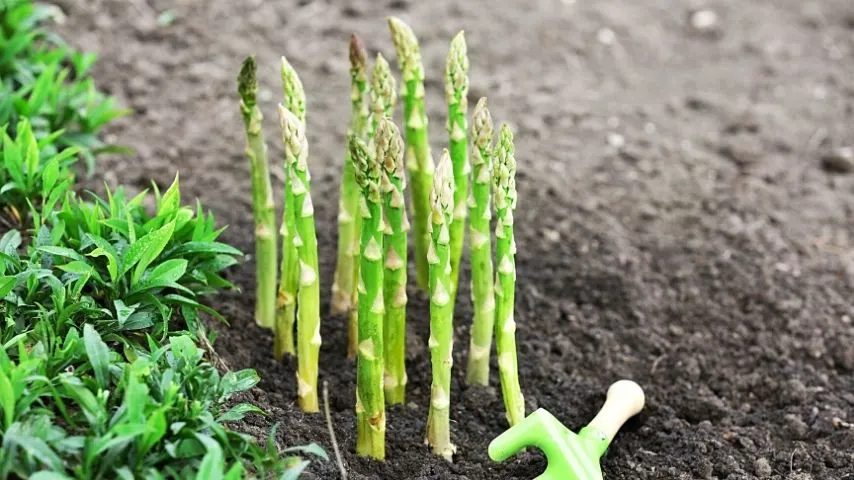
Asparagus, a spring-growing vegetable, is available in several varieties
Asparagus is delicious, nutritious, and the perfect side to any meal. Suppose you enjoy a good helping of this delicious vegetable.
You can try growing some as this is a spring-season vegetable that is available in several varieties.
Its binomial nomenclature and basic plant care requirements include:
- Scientific Name: asparagus Officinalis
- Family: Asparagaceae
- Temperature: 70 degrees Fahrenheit to 85 degrees Fahrenheit (21-to-29.44ᵒC)
- Fertilizer: all-purpose garden fertilizer rich in organic compounds
- pH: 6.5 to 7.5
- Soil: sandy and well-drained
- Lighting: 6-8 hours (bright sunlight)
- Growth rate: moderate growth rate
- Humidity: 90-98% humidity is recommended
18. Cardoons
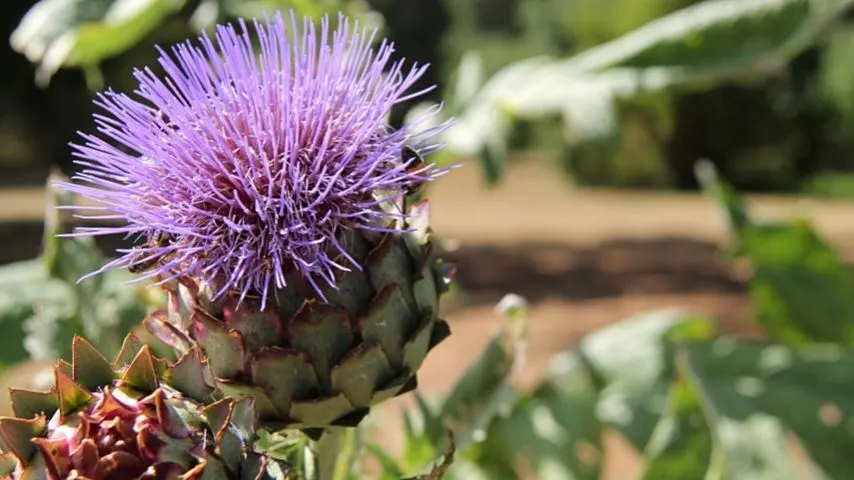
Cardoons, a thistle-like vegetable with a taste close to artichokes, is a veggie you can plant in spring
This exotic vegetable originated in the Mediterranean. It is a thistle-like vegetable close to an artichoke in appearance and taste. However, instead of eating the heart of this plant, stems are eaten.
Its binomial nomenclature and basic plant care requirements include:
- Scientific Name: Cynara cardunculus
- Family: Asteraceae
- Temperature: 75 degrees Fahrenheit to 85 degrees Fahrenheit (24ᵒ C-29.4ᵒ C)
- Fertilizer: rich mulch compost and aged manure
- pH: 5.5 to 7.5
- Soil: nutrient-rich and well-drained
- Lighting: 10-12 hours (bright sunlight)
- Growth rate: moderate growth rate
- Humidity: 95-100% humidity is recommended
19. Fava Beans
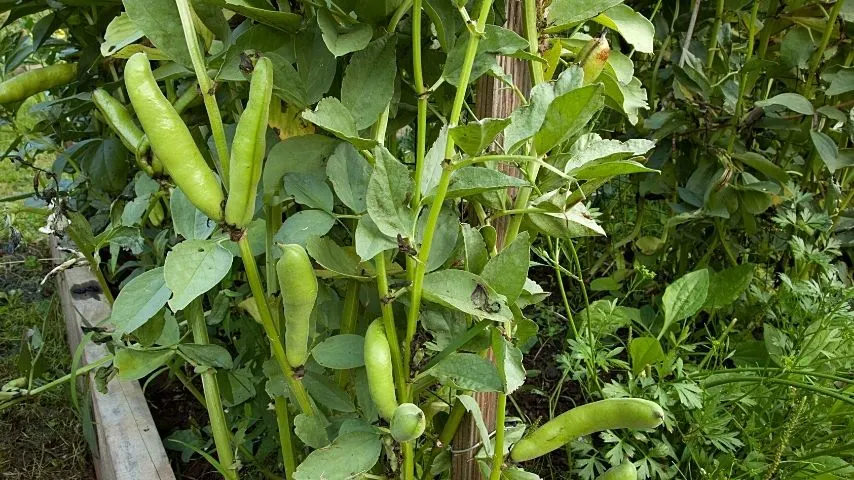
Fava Beans is an easy-to-grow vegetable in a spring garden
This is a springtime bean that is easy to grow. The green pods are filled with flat, large, and demanding beans.
This is a vegetable grown worldwide in its dry and fresh form. This bean can grow in your back yard is ideal for soups, curries, and stews.
Its binomial nomenclature and basic plant care requirements include:
- Scientific Name: Vicia Faba
- Family: Fabaceae
- Temperature: 60 degrees Fahrenheit to 65 degrees Fahrenheit (15ᵒ C-18.3ᵒC)
- Fertilizer: nitrogen fertilizer is not recommended
- pH: 6 to 6.5
- Soil: well-drained, moist, and loamy
- Lighting: 6 hours (bright sunlight)
- Growth rate: moderate growth rate
- Humidity: 18-20% humidity is recommended
20. Green Garlic
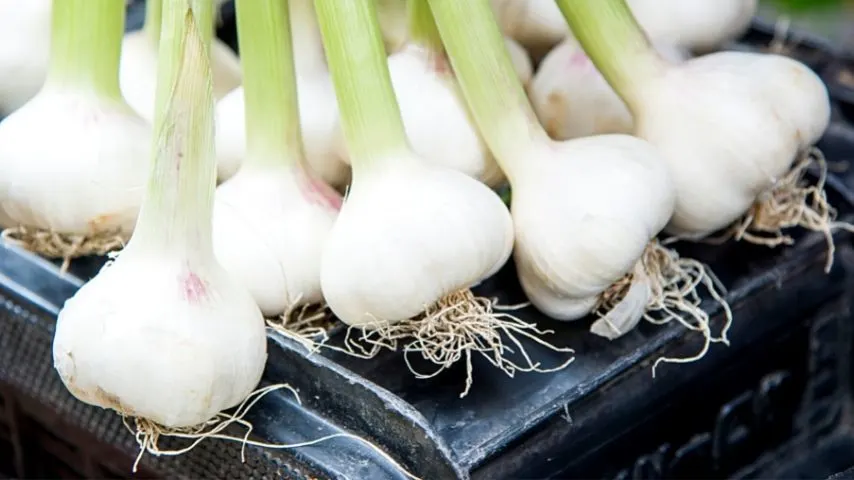
If you’re looking for a seasonal vegetable to grow in spring, the Green Garlic is your best choice
This seasonal plant resembles scallions closely. This is grown as a whole crop during the spring months.
The green stems are fresh, and the bulb is tender enough that it’s possible to eat it raw.
Its binomial nomenclature and basic plant care requirements include:
- Scientific Name: Allium sativum
- Family: Amaryllidaceae
- Temperature: 100 degrees Fahrenheit to 110 degrees Fahrenheit (37.7ᵒ C-43.3ᵒC)
- Fertilizer: nitrogen-rich fertilizer
- pH: 4 to 5
- Soil: well-drained and sandy loam
- Lighting: 5 hours (bright sunlight)
- Growth rate: fast growth rate
- Humidity: 60% humidity is recommended
21. Leeks
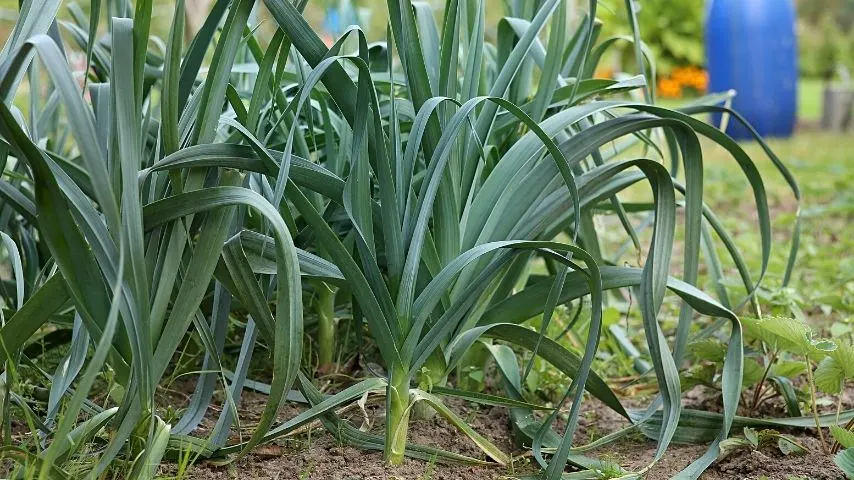
Leeks has a simple growing process that makes it a suitable vegetable to plant in spring
Despite the widespread understanding that leeks are challenging to grow, the process is relatively simple.
For a strong harvest, leeks are best planted indoors during the spring months and then transplanted outdoors.
Its binomial nomenclature and basic plant care requirements include:
- Scientific Name: Allium Porrum
- Family: Amaryllidaceae
- Temperature: 55 degrees Fahrenheit to 75 degrees Fahrenheit (13ᵒ C-24ᵒC)
- Fertilizer: nitrogen fertilizer is not recommended
- pH: 6 to 7
- Soil: high in nitrogen, fish emulsion and well-drained
- Lighting: 8 hours (bright sunlight)
- Growth rate: moderate growth rate
- Humidity: 95-100% humidity is recommended
22. New Potatoes
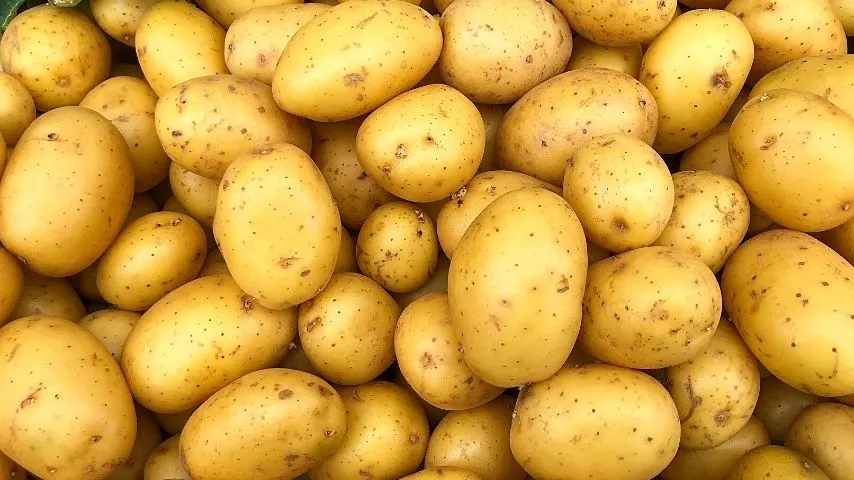
New Potatoes are bite-sized variety of potato that you can grow during spring
New potatoes aren’t just bite-sized pieces of goodness but also the most delicious of the potato bunch. These are harvested during spring far before they can fully mature into regular potatoes.
This is also done to give the potato harvest more room to grow.
Its binomial nomenclature and basic plant care requirements include:
- Scientific Name: Solanum tuberosum
- Family: Solanaceae
- Temperature: 60 degrees Fahrenheit to 70 degrees Fahrenheit (16ᵒ C-21ᵒC)
- Fertilizer: low nitrogen yet needs twice as much for phosphorus
- pH: 5.3 to 6
- Soil: high in nitrogen, fish emulsion and well-drained
- Lighting: 6 hours (bright sunlight)
- Growth rate: fast to a moderate growth rate
- Humidity: 50-85% humidity is recommended
23. Turnip
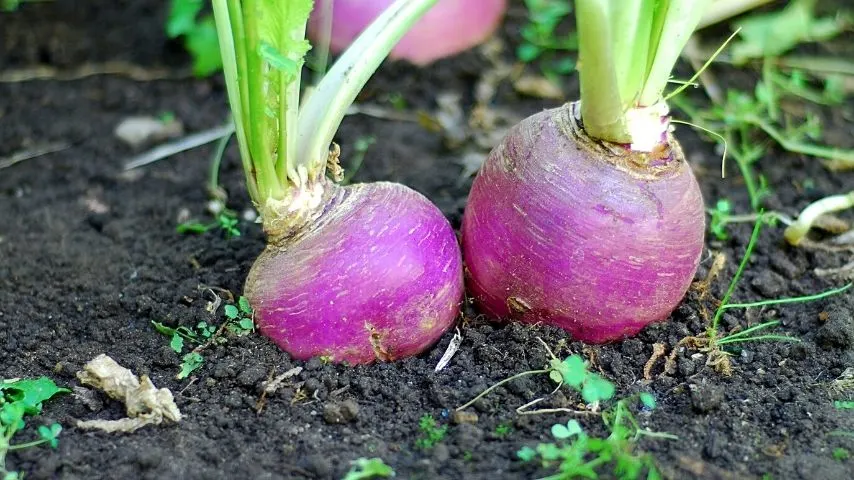
Turnip ideally grows when you plant it in spring
This cool-weather plant can be eaten in its entirety. Everything is entirely edible, from the bulb to the stems, and does well in cooked dishes.
If you are planning to grow these, then fall and spring are the ideal times for it as they don’t do well in the hot summer months.
Its binomial nomenclature and basic plant care requirements include:
- Scientific Name: Brassica rapa subsp. Rapa
- Family: Brassicaceae
- Temperature: 40 degrees Fahrenheit to 70 degrees Fahrenheit (4.44ᵒ C-21.11ᵒC)
- Fertilizer: low organic compost/matter and low nitrogen
- pH: 6 to 7.5
- Soil: Slightly acidic, deep loam, and fertile
- Lighting: 6 hours (bright sunlight)
- Growth rate: moderate growth rate
- Humidity: 98-100% humidity is recommended
24. Spring Onions
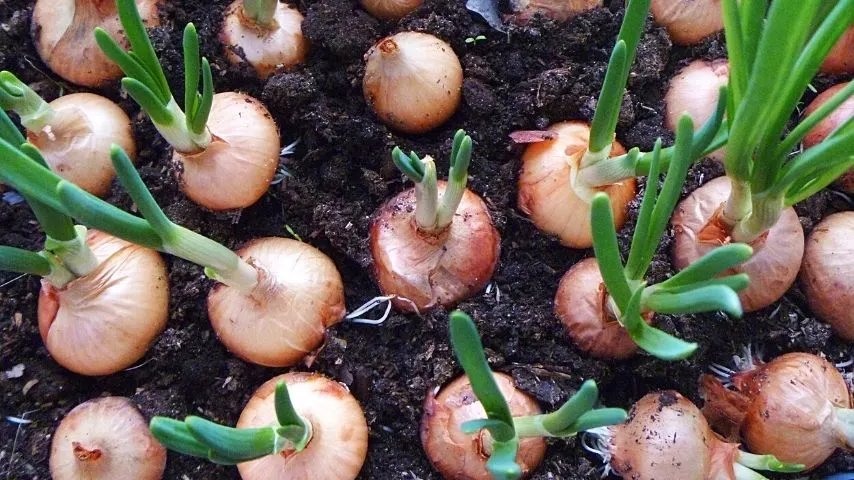
If you’re looking for another easy-to-grow plant for spring, then Spring Onions is your best bet
Spring onions are the perfect embodiment of spring. These light, easy-to-grow vegetables add a distinct flavor to stir-fries, a hot bowl of ramen, or scallion oil.
This is a plant used in various cuisine, primarily as a garnish.
Its binomial nomenclature and basic plant care requirements include:
- Scientific Name: Allium Fistulosum
- Family: Amaryllidaceae
- Temperature: 68 degrees Fahrenheit to 78 degrees Fahrenheit (20ᵒ C-25.55ᵒC)
- Fertilizer: nitrogen-based
- pH: 5.3 to 5.8
- Soil: well-drained and moist
- Lighting: morning shade and afternoon light (bright sunlight)
- Growth rate: fast growth rate
- Humidity: 68-75% humidity is recommended
25. Parsley
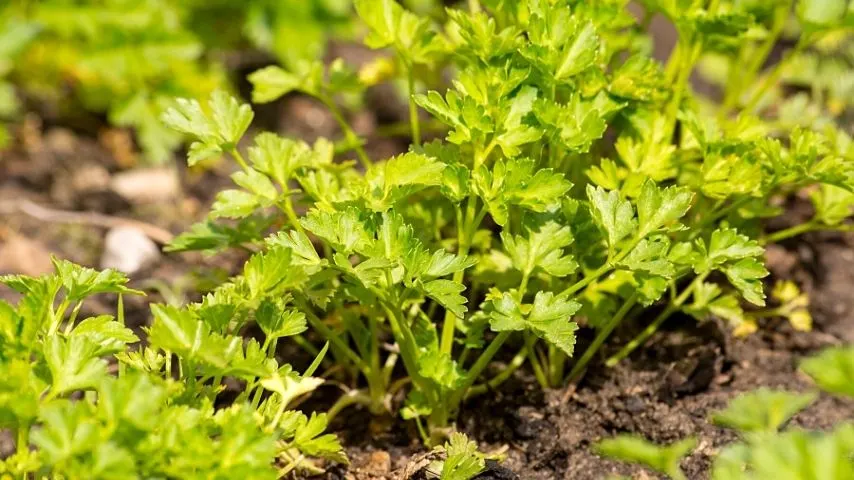
Parsley is another great plant to grow in your spring garden
This flavorful herb is the perfect addition to soups, curries, salads, etc. You can use it as a garnish or add it to the cooking process for its distinct flavor.
This is the perfect spring plantation for your home garden.
Its binomial nomenclature and basic plant care requirements include:
- Scientific Name: Apiaceae
- Family: Umbellifers
- Temperature: 68 degrees Fahrenheit to 80 degrees Fahrenheit (20ᵒ C-27ᵒC)
- Fertilizer: rich in organic matter
- pH: 6 to 7
- Soil: well-drained, rich soil
- Lighting: 6-8 hours (direct sunlight)
- Growth rate: moderate growth rate
- Humidity: 95-100% humidity is recommended
26. Lemons

Lemons are citrus fruits that you can grow in your garden during spring
Nothing describes the spring season better than fresh lemons. The vibrant color and flavor make it a must for anyone planting a garden.
This relatively easy-to-grow plant allows you to enjoy fresh lemonade anytime you want.
Its binomial nomenclature and basic plant care requirements include:
- Scientific Name: Citrus limon
- Family: Rutaceae
- Temperature: 55 degrees Fahrenheit to 100 degrees Fahrenheit (12.77ᵒ C-37.77ᵒC)
- Fertilizer: high in nitrogen
- pH: 6 to 7
- Soil: loamy/sandy-loam soils
- Lighting: 6-8 hours (bright sunlight)
- Growth rate: moderate growth rate
- Humidity: 50%-90% humidity is recommended
27. Kale
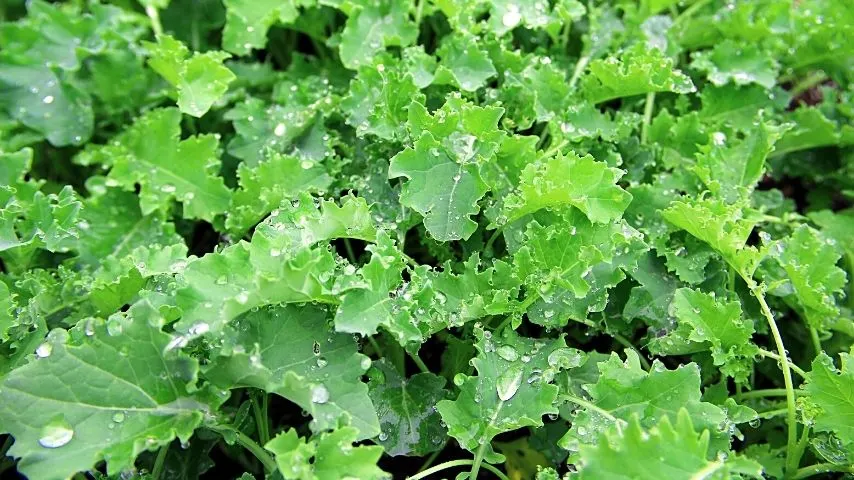
Kale is another delicious vegetable you can grow during spring
This green leafy vegetable can quickly turn into the perfect snack with a bit of olive oil, some salt, and some pepper.
The best part is that you can grow it right in your backyard and enjoy this nutrient-dense treat anytime.
Its binomial nomenclature and basic plant care requirements include:
- Scientific Name: Brassica oleracea var sabellica
- Family: Brassicaceae
- Temperature: 65 degrees Fahrenheit to 75 degrees Fahrenheit (18.33ᵒ C-23.88ᵒC)
- Fertilizer: moderate richness in phosphorus, nitrogen, and potassium
- pH: 6 to 7.5
- Soil: well-drained and fertile
- Lighting: 6 hours (bright sunlight)
- Growth rate: fast growth rate
- Humidity: 55-65% humidity is recommended
28. Brussels Sprouts
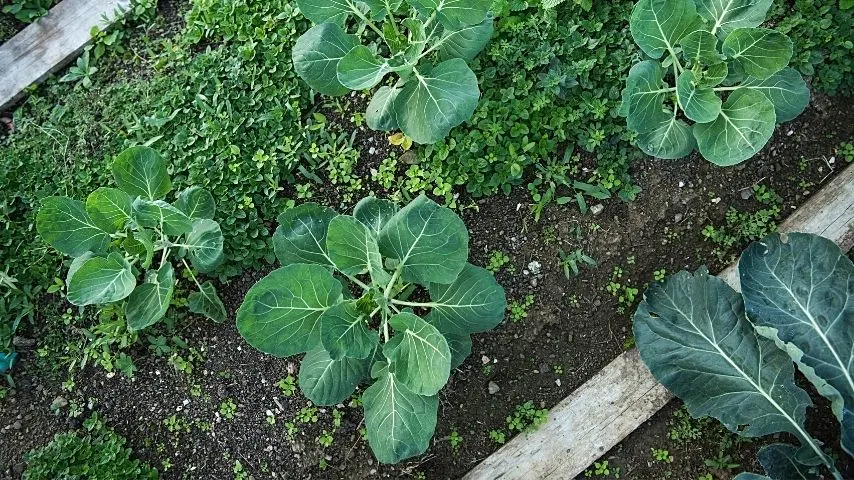
Brussels Sprouts need to be planted 2-3 feet apart in your spring garden
With the right recipe, these nutrient-dense vegetables can be incredibly delicious. They must be planted indoors and then transplanted after 90 to 100 days.
Make sure to sow them at least 2 to 3 feet apart.
Its binomial nomenclature and basic plant care requirements include:
- Scientific Name: Brassica oleracea var. gemmifera
- Family: Brassicaceae
- Temperature: 60 degrees Fahrenheit to 65 degrees Fahrenheit (15.55ᵒ C-18.33ᵒC)
- Fertilizer: a time-based fertilizer, preferably granular
- pH: 6 to 7
- Soil: Slightly acidic to neutral and well-drained
- Lighting: 6 hours (bright sunlight)
- Growth rate: moderate growth rate
- Humidity: 90-95% humidity is recommended
29. Ramps
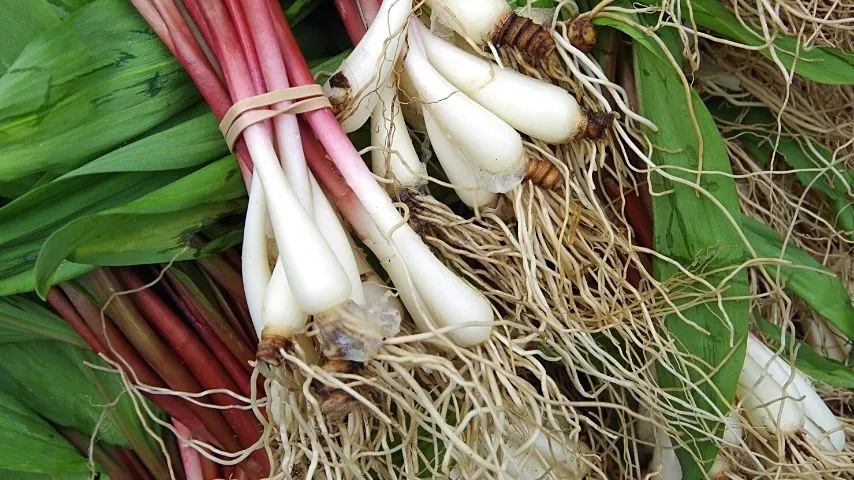
Ramps grows best in a forested area in your home during spring
If you have forested land behind your property, it may be time to plant these ‘little onions’.
These little vegetables are jam-packed with flavor that can best be described as a mix between garlic, onion, and scallion.
Its binomial nomenclature and basic plant care requirements include:
- Scientific Name: Allium tricoccum
- Family: Amaryllidaceae
- Temperature: 46 degrees Fahrenheit to 54 degrees Fahrenheit (7.77ᵒ C-12.22ᵒC)
- Fertilizer: may need no fertilizer
- pH: 6.8 to 7.2
- Soil: loamy, plenty of organic matter, and moist
- Lighting: 4-7 hours (bright sunlight)
- Growth rate: fast growth rate
- Humidity: 30-50% humidity is recommended
30. Bok Choy
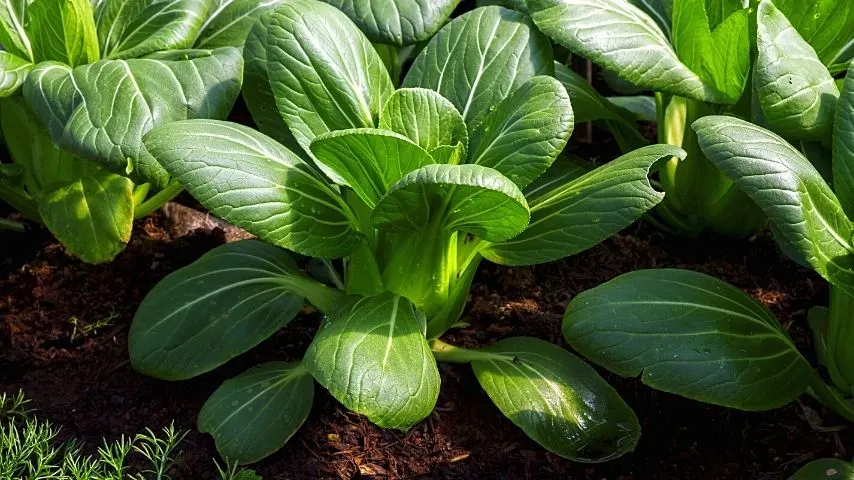
Bok Choy is another versatile plant that you can grow in spring
This is a versatile plant that can grow in spring and late summer. Add a crunch to soups, salads, and stir Frys with this delicious leafy vegetable.
Enjoy a harvest of well-grown Bok choy with the following information:
- Scientific Name: Brassica rapa subsp. chinesis
- Family: Cruciferae
- Temperature: 55 degrees Fahrenheit to 70 degrees Fahrenheit (12.77ᵒ C-21.11ᵒC)
- Fertilizer: compost (organic based) fertilizer
- pH: 6.5 to 7
- Soil: well-drained and enriched with organic matter
- Lighting: 6 hours of full sun and some shade
- Growth rate: moderate growth rate
- Humidity: 95-100% humidity is recommended
Conclusion
The Spring season is the ideal time to plant your vegetables.
You can choose to grow a series of vegetables that require similar conditions to thrive.

Daniel has been a plant enthusiast for over 20 years. He owns hundreds of houseplants and prepares for the chili growing seasons yearly with great anticipation. His favorite plants are plant species in the Araceae family, such as Monstera, Philodendron, and Anthurium. He also loves gardening and is growing hot peppers, tomatoes, and many more vegetables.


